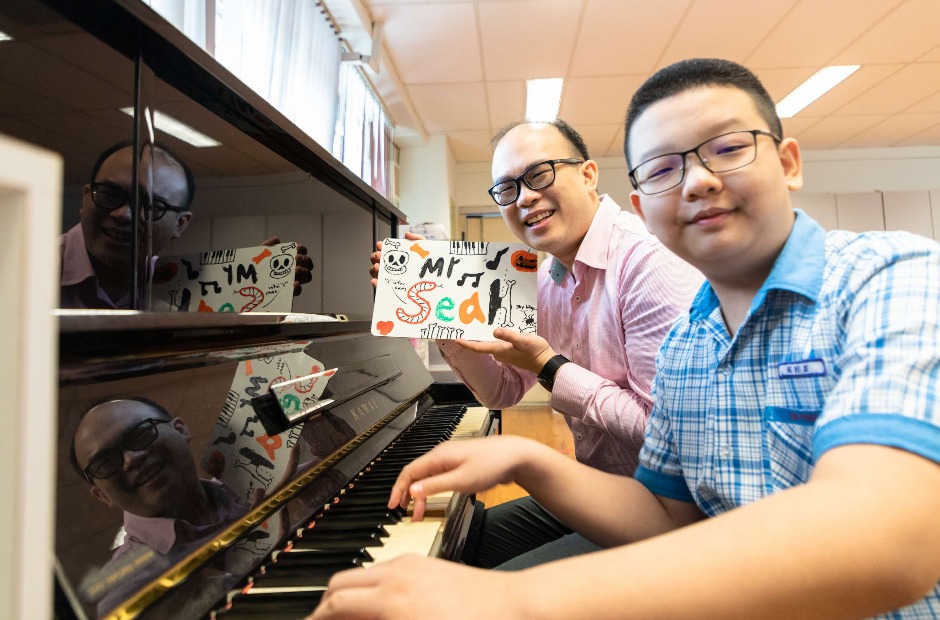Plugging In To New Strategies for Language Learning
03 Jun 2011
For 20 minutes each day, pupils are set loose to engage in a love affair with the English language. They read to themselves and others, listen to others read, brush up on their spelling or play word games. With a choice of five activities, this “Daily 5” is a designated segment of school hours that gives children time to explore the language and enjoy reading and writing at their own pace.
Such unstructured sessions, which provide fun and freedom from pressure, help children from homes where English is not the mother tongue to acquire confidence and command in the language. For Mrs Tamilaras Subramaniam, a Master Teacher of Tamil as a Mother Tongue, the privilege of observing one such class at a school in Maryland, USA, offered insights for her own work in Singapore. “The pupils really look forward to going to school,” she remarked of one outcome of the exercise.
Lessons on mastering a second language
Based at MOE’s Umar Pulavar Tamil Language Centre, Mrs Subramaniam’s sojourn to America was the result of a Fulbright Distinguished Award in Teaching, which supported a four-month stint to investigate the teaching of reading and comprehension skills to non-native English speakers. Her foray into the US education system involved observing how elementary school (equivalent to primary level) pupils learn and practise the English language.
Many of the children Mrs Subramaniam observed were from Hispanic families in the English for Speakers of Other Languages (ESOL) programme. But the experience offered insights that proved useful for her capstone project, which looked at various strategies used to enhance reading comprehension skills, with the ultimate aim of developing applicable best practices for Tamil language classes in Singapore.
Unlike Singapore schools, where Mother Tongue classes tend to comprise pupils of similar ethnic backgrounds, ESOL classes offered what Mrs Subramaniam described as a “United Nations” experience, with a lively mix of pupils of diverse origins from Mexico and Latin America to East Europe and Asia. For two months, she “shadowed” a reading specialist in ESOL classes across Grades 1 to 5, studying how the school used differentiated instructional methods to give each pupil the right kind of help to master the English language.

Master Teacher Mrs Subramaniam explores how “instructional scaffolding” is needed to help pupils step up from a basic concept to acquiring higher skills.
One method, called “plug-in”, involving teaching an entire class of pupils as a homogeneous group. Alongside this, the school allocates curriculum time to “pull-out” sessions in which pupils who require greater attention meet their teacher for further coaching. Another way of delivering customised teaching tailored to the needs of individual pupils is co-teaching or parallel teaching, in which small groups receive coaching by a second teacher in the classroom who reinforces the lesson of the day or revisits a past topic.
Dividing a class into smaller groups, noted Mrs Subramaniam, provided children the opportunity “to learn according to their needs and interests.” In addition, ESOL classes often furnish an ample number of computers in each class along with a rich repository of language and other learning resources, which pupils may freely access for independent learning. This wide availability of infocomm technology (ICT) and online resources is one feature she hopes to replicate in local Tamil Language classes.
Making the Mother Tongue a priority at home
Based on what she saw in American schools, Mrs Subramaniam believes some of the strategies used by ESOL teachers could be applied to great effect by parents who want to support their children’s Mother Tongue capabilities. Even something as simple as getting down to the children’s level physically can improve the rapport between teacher and pupil, or parent and child. She recalled that American teachers often sat together on the floor with their classes during reading sessions. “It is less threatening,” she said of the impact of this gesture, which helps to establish a degree of comfort amenable to learning.
Also of relevance to Singapore, where Tamil language speakers are a minority, is the willingness to create opportunities to speak the language. “Parents or other family members could act as role models in the use of the language,” explained Mrs Subramaniam of the need to foster an environment that encourages the use of the Mother Tongue. “Don’t just leave it to the Tamil teachers. Parents should consciously use Tamil to communicate with their children or create opportunities to use the language. This would encourage Tamil students to speak the language comfortably with their Tamil-speaking friends beyond Tamil classes.”
In a time when mobile gadgets are ever-present in the lives of young people, Mrs Subramaniam added that “infusing ICT is another way to interest children in learning the language.” Tamil fonts are now supported in digital formats, so she looks forward to being able to engage learners via a greater range of multimedia platforms such as e-books, podcasts, video podcasts and blogs.
But tools are only as good as the will to wield them. Thus, Mrs Subramaniam urges parents to chip in, ensuring for instance that at least one book borrowed during each visit to the library is a Mother Tongue story. Other steps include reading with the children, encouraging them to express themselves in their Mother Tongue, watching relevant TV shows and listening to radio broadcasts in the Mother Tongue. “Family support is crucial to cultivate a love for the language and culture among our pupils,” she stated in closing. “This is how we can preserve it as a living language.”




.jpg)



